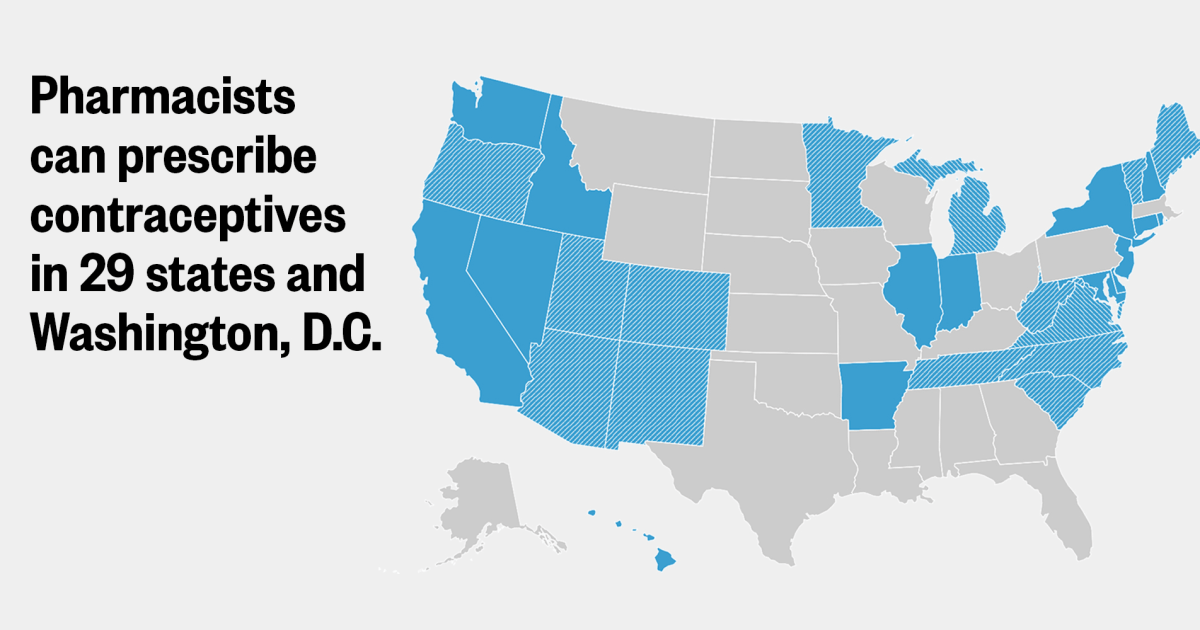
Arizona last week became the latest in a growing group of states that allow people to get birth control from a pharmacist without a doctor’s prescription.
Since 2016, 29 states and Washington, D.C., have passed laws allowing pharmacists to prescribe hormonal contraception such as birth control pills and patches. Arizona’s new policy, announced Thursday, applies to people 18 years and older and comes on the heels of similar legislation that Rhode Island Gov. Dan McKee, a Democrat, signed into law last month.
The policies vary by state: 10 states require that patients be 18 or over, while four specify that pharmacists can only prescribe the pill and patch forms. The pill is the most popular form of hormonal contraception — 14% of U.S. women 15 to 49 years old currently use it, according to the Centers for Disease Control and Prevention.
Nicole Huberfeld, co-director of the Boston University Program for Reproductive Justice, said one factor that has fueled the trend is a shortage of primary care providers.
“Pharmacists became important points of access during the Covid-19 pandemic,” Huberfeld said. “State laws were out of step with what care pharmacists can actually provide, and the pandemic kind of highlighted the need for reconsidering and maybe modernizing how pharmacists can make use of their licensure.”
Another factor, she added, is the overturning of Roe v. Wade last year and increasing restrictions on abortion nationwide.
“You can’t have fewer abortions and not also have more contraception,” Huberfeld said. “Those things have to go hand in hand.”
Advisers to the Food and Drug Administration recommended in May that the agency approve the first over-the-counter birth control pill, but the agency has yet to grant approval. In the meantime, Huberfeld said, allowing pharmacists to prescribe birth control can be especially crucial for younger, lower-income or uninsured people, who are less likely to visit a doctor’s office.
“There are many places in the United States where people live in medically underserved areas, especially rural areas, and they need more access to care,” she said.
Kelly Fine, CEO of the Arizona Pharmacy Association, said that in states that allow pharmacists to prescribe birth control, interested patients usually start by filling out a screening questionnaire. Once a pharmacist determines that they don’t have any conditions that preclude them from taking hormonal birth control, like liver disease or breast cancer, then they can review birth control options with the patient, based on the particular regulations in that state.
But Fine added that in states that recently passed these policies, it may take time for some pharmacies to begin providing prescriptions.
“It does sometimes take a while for these pharmacies to get the services up and running. It requires pharmacists to go through the training, the pharmacies have to develop the proper policy procedures and get all of that in order,” she said.
Fine suggested patients call their pharmacies to find out whether they offer birth control prescriptions.
“The whole goal is to make sure that if and when women do decide to get pregnant that they’re healthy, ready, wanting to have a baby,” she said.
As another alternative to doctor’s visits, Planned Parenthood also offers digital birth control prescriptions via an app in 42 states and Washington, D.C.






